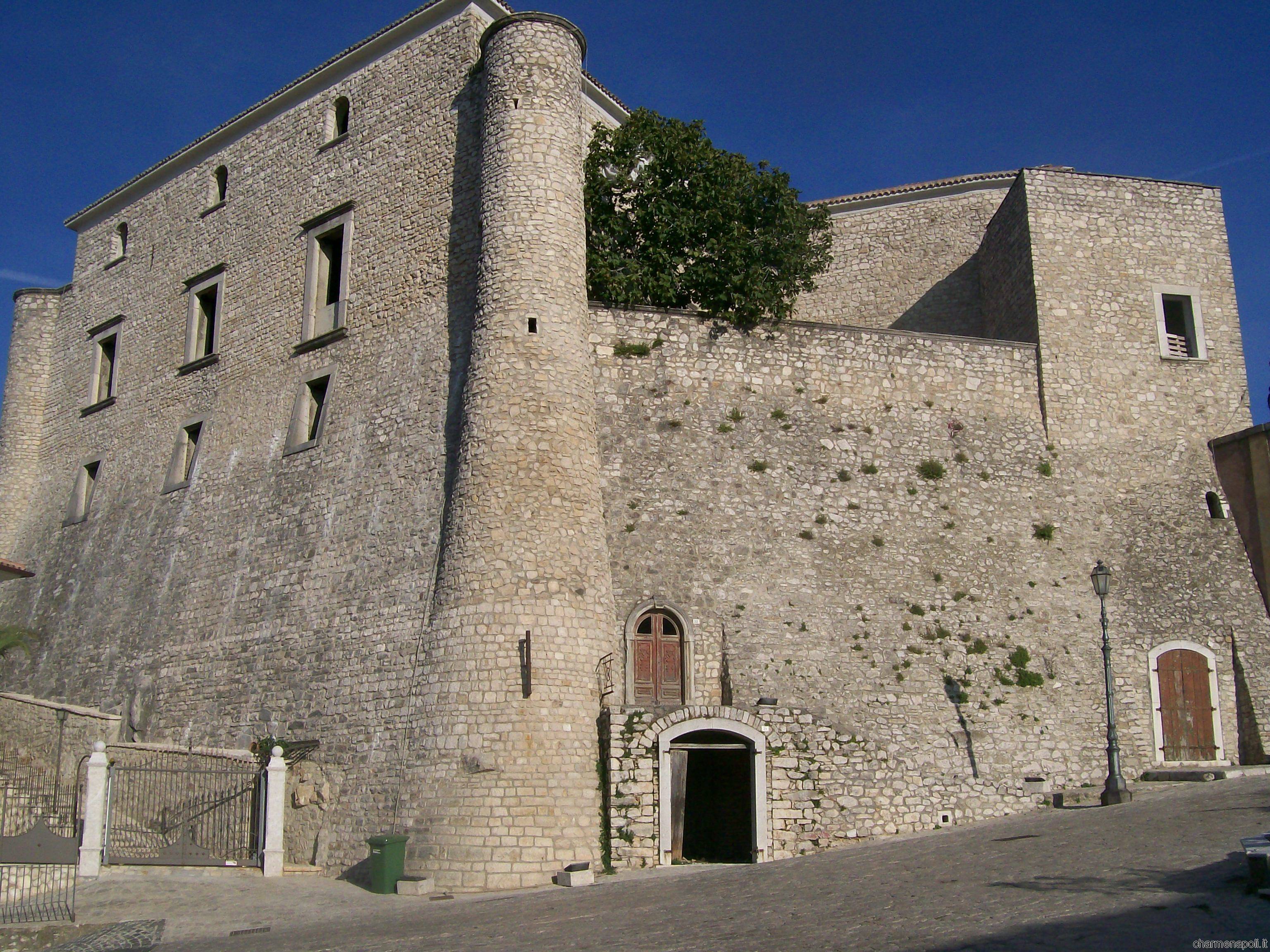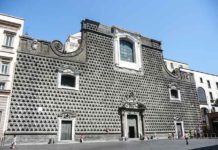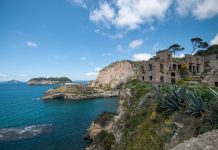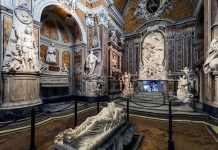Colossal rock and granite sentinels guarding the boundaries of the Reign of Naples. Insurmountable barriers built to stop the invaders coming from the seaside, the fortresses were also comfortable and magnificent dwellings for the squires and their entourage. The numerous castles of Irpinia are genuine wonders set in a charming region of Terra Felix. Impressive and elegant, symbols of a fertile and luxuriant land which had to be protected at any rate. Let’s start a journey in a distant time, where the sound of swords and armours still echoes, let’s start a “grand tour” among the most famous castles of Irpinia.
The castle of Lauro is one of the best preserved of the entire region. This majestic and panoramic monument, feudal abide of the Lancellotti family, today is a historical residence where meetings and high-class events take place.
It was built at the beginning of the year one thousand, probably by the Normans, and it was finally acquired by the Lancellotti family. In 1799, after a pro-Borbouns revolt, it was almost completely destroyed by the French troops supporting the Parthenopean Republic. The castle was rebuilt in 1872, thanks to the intervention of Prince Filippo Lancellotti.
Elements of Renaissance, Gothic, and Baroque art are exquisitely melted. The highest tower dominates the entire building from its more than 16 metres of height. The internal court has an elegant fountain in the centre, made with Roman reuse material, while the wide rooms have names recalling the function they had in the past centuries: Arms Room, Red Hall, Music Room, Pharmacy, Stable with carriages, and Library.
In Bisaccia, near the boundaries with Apulia and Basilicata regions, stands the Castello Ducale,probably built by the Longobards around the second half of VIII century on the remains of a Byzantine fortress. In 1158 it was completely destroyed by an earthquake, and it was reconstructed by Frederic II of Swabia first and then by the Spanish Aragonese. Around the end of XVI century, before becoming property of the Pignatelli d’Egurant family, the castle was the residence of Giovan Battista Manso, friend of the poet Torquato Tasso, who spent there some time in 1588.
Today in the fort there is an archaeological museum exhibiting, among the other findings, the precious “Princess of Bisaccia Tomb”, dated to the Iron Age (IX-VII century B.C.).
In Capriglia Irpina, hearth of the province, rises Palazzo Carafa, an impressive residence built in the XVI century by the Carafa family, on the remains of a Medieval castle at the foot of Mount Partenio, along the way leading from Avellino to Benevento.
According to the legend, in this building was born in 1476 Gian Pietro Carafa, Pope Paul IV, whose role was fundamental for the development of the Roman Inquisition.
During the centuries, Capriglia castle had many owners: Ottimo Caracciolo, Niccolò of Aquino, and lastly the Carafa family. It was abandoned after World War II. The walls of the wide Hall were richly decorated by frescos now disappeared.
Another famous castle is called Gesualdo, after the name of the owner, the great madrigalist Carlo Gesualdo, prince of Venosa, who in 1590 killed his wife Maria of Avalos and her lover Fabrizio Carafa, at Palazzo San Severo in Naples.[charme-gallery]
After his crime, Gesualdo decided to retire in this Longobard fort, placed in a high position on the northern side of Fredane river, to compose his music. After his wedding with Eleonora of Este, he added new apartments, rooms and galleries to the fortress, turning it in a sumptuous residence decorated in Renaissance style.
In Grottaminarda, in the vally of Ufita river, at 453 metres of height, stands one the most famous castles of Campania: d’Aquino castle, named after the owner Landolfo d’Aquino, who in 1229 made it the symbol of his power.
The fortress, built during the XII century, was rebuilt and strengthened many times during the centuries. Today it hosts a Library and an important “Museo Antiquarium” which preserves prehistoric and Roman findings.
Even Sant’Angelo dei Lombardi Castle, built by the Longobards in the X century and strengthened during the XI century by the Normans, sustained several modifications, particularly in the XVI century under the Caracciolo family and in 1768 with Prince Placido Imperiale, definitely losing its Medieval look. The Castle was damaged by the 1980 earthquake, and nowadays it has been used as law-court, prison, and archive.
Last but not least, the Castello of Taurasi stands on a hill above the Calore river. It was probably built in the X century, under the Longobard domination. Destroyed by the Saracens, it has been restored by the Normans. In 1381, it was property of Giacomo Filangieri, after few decades of Count Sergianni Caracciolo. Damaged again by the Aragonese army at the end of the XV century, at the beginning of 1600 it has become a noble residence. In this castle, called also “Palazzo Marchionale”, was born Carlo Gesualdo in 1566.
The fort, which has been visited even by the poet Torquato Tasso and today hosts the Regional Stock of Irpinia Wines, deserves a visit especially for the astonishing helicoidal stone stairs and the extraordinary chapel of San Pietro a Castello.

 Italiano
Italiano














